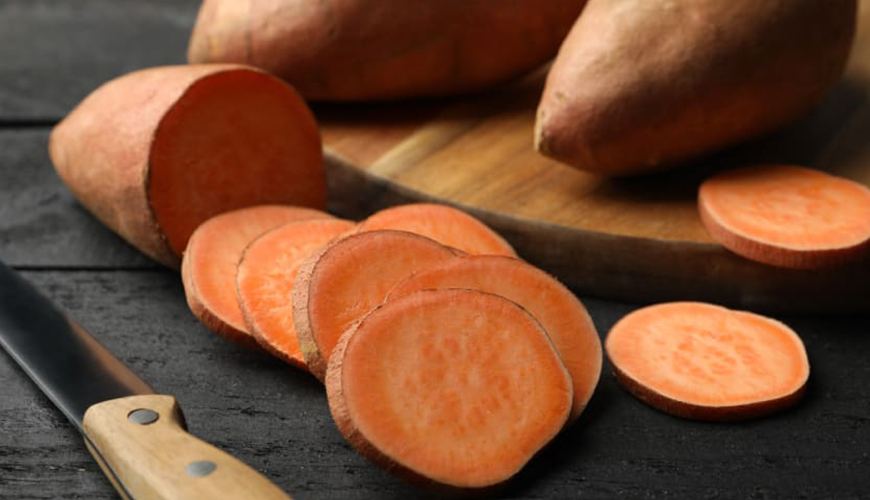First of them is iron. In order to replace the blood lost during menstruation and to meet our energy requirements for our busy lives, we must absolutely eat foods rich in iron. Iron is an essential material for all mammals and it plays a crucial role in our bodies. Its primary function is about oxygen transfer inside the body. Iron is contained in the hemoglobin component which carries oxygen, is also employed in detoxification, purifying our bodies from toxins and is also required for the immune system and cognitive-mental performance. We can receive iron from animal products such as beef, poultry, fish and seafood. We can also receive it from plants such as; dark-green leafed plants (spinach, chard, peppergrass, garden rocket, etc.) legumes (such as green lentils), pekmez, dried fruits and fatty seeds (hazelnuts, walnuts, etc.)
The second most important mineral is calcium. The path to having healthy teeth and bones, perfect operation of the neural system, protecting bodily functions such as the heart muscle, is through having full calcium storages in our bodies. Bone is a growing and regenerative structure. Its growing ends at a certain age but its regeneration continues for life. Bone growth continues until ages 18-22 in males and 16-18 in females. Around mid-twenties, mineral intensity of the bones stabilizes. In thirties, mineral intensity of the bone maximizes. After thirties, our bodies stop storing calcium. After this point, calcium you receive on a daily basis is used for bones, teeth and muscles. If calcium intake is not sufficient, body starts to use calcium storages and in time, those storages are depleted. Especially during and after menopause, if calcium intake is insufficient, bone loss may occur and your predisposition for osteoporosis increases. Milk, soy milk enriched with calcium, tofu or soy cheese, cheese, yoghurt, foods and beverages enriched with calcium, cauliflower, peppergrass, brussels sprout, turnips, kale (a vegetable similar to cabbage), mustard leaves, chinese cabbage (bok choy), broccoli, almonds, sesame, beans, sweet potatoes, spinach and chard are good calcium sources.
The third most important mineral is magnesium.Most common symptoms in women with magnesium deficiency; are chronic fatigue, weakness and lethargy, palpitations, diziness and cramps. You can however access magnesium with dark-green leafed vegetables, zucchini, broccoli, lentils, chickpeas and other legumes, celery, walnuts, almond oil and similar seeds, sesame and linseed.
Healthy nutrition is the cornerstone of a healthy life. Even though some foods are more emphasized in certain periods, it is required for everyone to consume a range of foods to protect their health.
Today, we present a delicious recipe which can be consumed by women of any age: Fettuccine with Sweet Potato. Click here to watch the preparation of this delicious meal.
Our Fettuccine with Sweet Potato recipe is for 3-4 people. Preparation duration is 5 minutes and cooking duration is 30 minutes. It has a durability rating of 3 stars.
Benefits of the ingredients included in the recipe of Fettuccine with Sweet Potato
Spinach which is an important ingredient of our recipe mostly consists of water (91,4%) and is quite rich in folic acid, Vitamin K, A and C, and minerals such as iron, magnesium, calcium and potassium.
- Saponines of spinach help decrease blood pressure and cholesterole. Therefore it protects cardiac health.
- Thylakoids of spinach increases leptine levels, decreases appetite and ensures the feeling of fulness.
- Spinach is quite rich pulps and fibres. Therefore, it prevents constipation by increasing bowel movements and expedites the metabolism.
- Spinach decreases the risk of mouth, oesophagus, alimentary canal and stomach cancers.
- Thanks to its VitaminK, folic acid, lutein and β-carotenes, spinach may decrease the cellular damage caused by the oxidative stress of the ageing process and may increase motor and cognitive functions, mental skills and short-term memory.
- Spinach is one of the richest sources of lutein which plays an important role in the prevention of macular degeneration and cataracts caused by ageing process.
Another one of the ingredients of our recipe, sweet potato is a root plant rich in starch, pulps, magnesium, Vitamin C, calcium, potassium, thymine, zinc and vegetable iron.
- Sweet potato is rich in antioxidants which protect the body from free radicals and chronic diseases.
- Anti-inflammatory effect of the sweet potato enhances cognitive health and provides protection against Alzheimer's disease.
- Sweet potatoes are quite rich in beta-carotenes which cause the bright orange colour of the plant. A cup of (200 grams) crusted cooked sweet potato, provides 7 times of the beta-carotene amount required for the average adult in a day. Beta-carotene is transformed into Vitamin A in the body and enhances eye health.
- With its magnesium rich structure, sweet potatoes provide protection against cramps and is relaxing for the muscles, therefore it also relaxes bowels for movements, helps discharge and balancing the blood pressure.
- Sweet potatoes, by increasing serotonin, happiness hormone, levels helps decrease stress and anxiety.
Black pepper which is an important ingredient of our recipe, is a spice which enhances and protects the immune system.
- Black pepper, with its piperine contents, is an anti-microbial.
- Piperine, by supporting the absorbtion and synthesis of the foods, increases the functionality of stomach and intestines.
- Black pepper, with its antioxidant potential, protects intestinal walls from stomach acids and ulcerative damage. However, people with ulcers are advised against using black pepper.
- Black pepper also provides protection against cancer.
- There are studies which suggest that black pepper can be used for the treatment of vitiligo.
- Piperine of black pepper, by protecting the neural cells from the damage caused by ageing process and environmental factors, contributes to the prevention of depression and Alzheimer's disease.
Let's take a look at the nutritional value our fettuccine with sweet potato:
| Energy and Nutrients | Quantity |
|---|---|
| Energy | 429,2 kcal |
| Carbohydrates | 64,1 g |
| Protein (12%) | 12,6 g |
| Yağ (28%) | 13,4 g |
| Posa | 5,1 g |
| Vitamin A | 487,2 µg |
| Vitamin D | 2,8 µg |
| Vitamin E | 1,35 mg |
| Vitamin K | 190,9 µg |
| B1 Vitamini | 0,2 mg |
| Vitamin B2 | 0,22 mg |
| Niasin | 2,05 mg |
| Vitamin B5 | 0,65 mg |
| Biotin | 5,3 µg |
| Vitamin B6 | 0,4 mg |
| Folic acid | 102,9 µg |
| Vitamin B12 | 0,15 µg |
| Vitamin C | 34,4 mg |
| Sodium | 360,7 mg |
| Potassium | 674,9 mg |
| Magnesium | 90,9 mg |
| Calcium | 122,7 mg |
| Phosphorus | 190,2 mg |
| Sulphur | 131,2 mg |
| Chlorine | 518,6 mg |
| Iron | 3,3 mg |
| Zinc | 1,85 mg |
When we consume our fettuccine with sweet potato, we meet:
- 61% of our daily carbohydrate requirement
- 12% of our daily protein requirement
- 28% of our fat requirements for the day.
Fettuccine with sweet potato recipe is healthy and balanced recipe for people of all ages. Eating fettuccine with sweet potato in a meal which includes all food types, will be sufficient for the balance of your diet.
Dr. Tuba Gunebak
Nutrition and Dietetics Specialist

